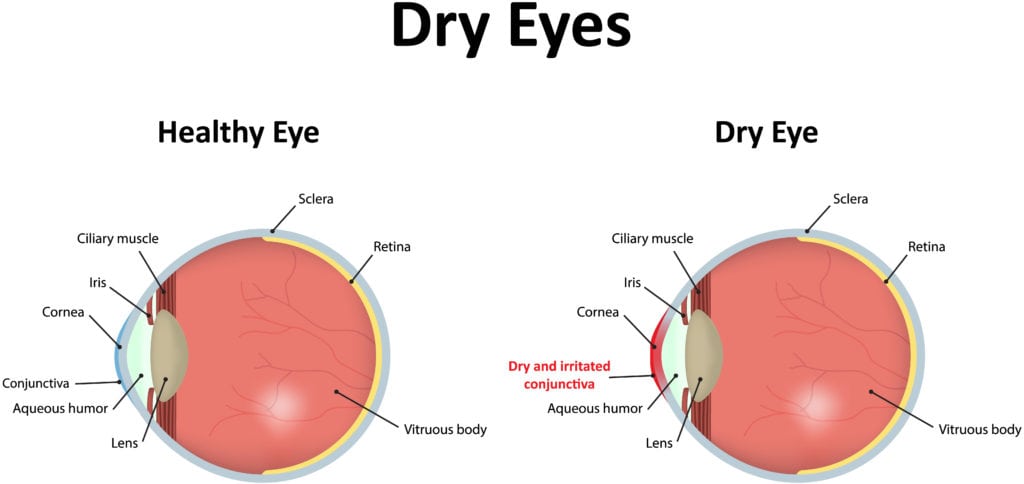 Dry Eye is a common condition and can be distracting and painful if left untreated. A normal healthy eye has a protective tear film that is made up of three layers: oil, water, and mucus. The oil layers (outermost) main job is to reduce the evaporation of tears. The watery layer (middle) washes away any foreign particles that enter the eye and the mucous layer (innermost) keeps tears on the cornea. The three layers have to be perfectly balanced to make sure the eye stays lubricated. One suffers from dry eye for two main reasons: the eye fails to produce enough tears or the quality of tears allows them to evaporate too quickly. Symptoms of dry eye can vary depending on the patient, but the most common signs are red, dry, and itchy eyes. The eye can also overcompensate on tear production to try and counteract dry eye symptoms causing the eyes to water.
Dry Eye is a common condition and can be distracting and painful if left untreated. A normal healthy eye has a protective tear film that is made up of three layers: oil, water, and mucus. The oil layers (outermost) main job is to reduce the evaporation of tears. The watery layer (middle) washes away any foreign particles that enter the eye and the mucous layer (innermost) keeps tears on the cornea. The three layers have to be perfectly balanced to make sure the eye stays lubricated. One suffers from dry eye for two main reasons: the eye fails to produce enough tears or the quality of tears allows them to evaporate too quickly. Symptoms of dry eye can vary depending on the patient, but the most common signs are red, dry, and itchy eyes. The eye can also overcompensate on tear production to try and counteract dry eye symptoms causing the eyes to water.
 Dry Eye Symptoms:
Dry Eye Symptoms:
- Redness
- Burning
- Pain
- Itchiness
- Blurred Vision
- Foreign Body Sensation
- Eye Fatigue
- Gritty Feeling
- Sandy Feeling
- Eyes Watering
These symptoms are often worse during the winter season, near the end of the day, while outside or driving, or after spending large amounts of time in front of a computer or reading.
There are many options to choose from to treat dry eye, ranging from artificial tears to adding Omega-3 oils to your diet. Someone can also choose to insert punctal plugs (tiny biocompatible silicon plugs) into the drainage ducts of the eye to conserve tears.